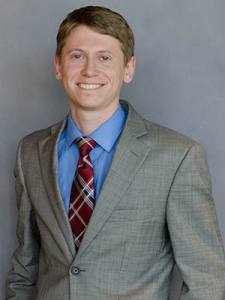When Plano ISD budgets for each upcoming school year, the process is informed by an array of informed estimates: How many students are going to return from last year? How large is the incoming kindergarten class? How do enrollment numbers affect the funding the district receives from the state?
When those estimates are incorrect, it can throw the budget off by millions of dollars, as was the case this school year when hundreds fewer students enrolled in Plano ISD schools than district staff had expected.
Demographic studies suggested the district could expect 188 fewer students to enroll this year than in 2017-18, a continuation of an ongoing trend in which the kindergarten classes coming in are smaller than graduating classes going out. However, the actual decline was four-and-a-half times as large, according to a district report presented in October to trustees.
Overall, the district was 662 students below the projected numbers for the 2018-19 school year. Enrollment was lower than expected at all but one grade level. Because the state’s payments to PISD are partly based on average daily attendance, the district is also having internal discussions about the $3 million budget shortfall that is expected to result.
“It’s probably going to affect future budgets more than the current year budget,” said Randy McDowell, the district’s chief financial officer. “I would say [there will be] little impact on the current year budget or staffing.”
The district does not yet know the full demographic breakdown of the students who did not enroll, nor a reason for why the projections were higher than the actual results. As of this paper’s print deadline, McDowell said the district was preparing a more detailed snapshot report to send to its demographer for further analysis.
That analysis is expected to be completed and made available to trustees sometime in the spring, McDowell said.
In the meantime, the district is discussing how to deal with a shortfall in expected revenue from the state of Texas.
Birth rates and expectations
PISD trustees first reviewed the unexpectedly large enrollment decline at a public meeting in October.
At the time, the district was reviewing numbers from earlier that month. More up-to-date numbers would not be available, McDowell said, until later in the school year.
“We do hope that we continue to grow [in enrollment] from Oct. 5 through the end of the month,” McDowell told trustees at the time. “We will not make up 662 students, unless the people at this table have heard of some major influx of student enrollment that I have not heard about.”
The change was driven in large part by the incoming kindergarten class being 3.5 percent below the projected levels, even as a larger 12th-grade class had just graduated in the fall. Incoming kindergarten classes are particularly difficult to estimate, McDowell said, because the best information districts have to go off of is the number of births in the area five years earlier.
The district had actually anticipated a slightly larger kindergarten class this year than it had in 2017-18, due to an increase in the number of births in 2013, district records show.
“As the demographer does try to project incoming kindergarteners, [births are] really the best way that we have to try to project that,” McDowell said.
Over the next two years, the district is preparing for a slightly larger influx of students based on higher birth rates demographers tracked in 2014 and 2015. But the lower-than-expected enrollment this year could adjust the district’s expectations going forward, McDowell said.
Dealing with a shortfall
The October report attracted the attention of trustees, several of whom asked how the demographer’s numbers could be so far off the mark.
“When you look at the numbers—662 [and] 850—that’s a school,” trustee Yoram Solomon said at the meeting. “That’s an elementary school. We have a spare elementary school, essentially. We need to get to the bottom of understanding why the projections—I mean, the biggest part of it is the projections being off by 1.3 percent.”
School board President Missy Bender pointed out that the numbers provided by the demographer were within the range of accuracy that they aim for, but that the numbers have produced issues for the district all the same.
“They tell you they try to be within about 1 or 2 percent [of total student enrollment], and they are,” Bender said. “It’s just that every year, we’re ticking down, ... so cumulatively, it adds up over time.”
This year, McDowell said, the district has several methods of addressing the roughly $3 million budget shortfall. However, the district is probably not looking at having to shrink staff size at schools mid-year, he said.
“Here in the middle of the year, if all departments have to cut their budgets or campuses have to cut their budgets, that’s probably pretty drastic in the grand scheme,” McDowell said.
Instead, the administration plans to monitor opportunities for cost-savings in contracts, and can lean on other budgetary options, such as savings from vacancies that emerge throughout the year. The district also has other budgetary options that can help close the $3 million gap.
“That’s why we have fund balance too, to kind of offset the ups and downs,” McDowell said.







